If You Really Loved Me Read online
Page 13
Brenda was a bit confused about what she should say. David had been so anxious for her to tell police that Cinny was weird, and she didn't trust David as far as she could throw him. But David could talk so well and make things seem the way he wanted her to believe. He had told her the police were just trying to railroad Cinny. Mr. Forgette too had said it was okay to reveal any emotional scenes. It would help Cinnamon. Brenda knew that Cinny was basically a good kid, and emotionally sound.
But she would do anything to save her child from prison, so she brought up all the blowups they had had. Mother-daughter arguments and yes, Brenda had sent Cinny to live with her father and stepmother. Cinny had been so snippy that Brenda had slapped her and Cinny had tried to hit her back.
"We got into a little mother-and-daughter, you know, argument, you know, fighting, you know, because she stayed out late, and it had something to do with her, you know, about obeying rules. . . . Just slapping. I struck her first and then she hit me, but I put my arm up to block her from hitting me."
"And it was thereafter that you sent her back to her father?" Forgette asked.
"Yes." Brenda hastened to explain that she and Cinnamon talked on the phone often and spent many weekends together.
And yes, she remembered that Cinny had called her about a week before Linda died. "She was feeling ill. She told me that her stomach hurt. She wasn't feeling too good. She said she felt like she was going crazy because everybody kept fighting there in the house.
"I just said, well, you know—you know, I didn't understand what was going on. And I told her I don't know what to tell you. I can't solve your dad's problems."
Cinnamon had not asked to move back with her mother. Whatever was troubling her remained bottled up inside.
Krista Taber testified that Cinnamon had not seemed as happy as she had before. But she struggled with specifics. The best Krista could do was to answer Al Forgette's question "Well, if you saw her five times, how many times was she unhappy in the five times?"
"Once." And that was the time Cinny had been ordered to leave the gathering of friends at Len Miller's house and come right home.
Krista had a vague recollection that Cinnamon had once told her she had taken fourteen aspirin. She didn't know why or when; Cinny had not even gotten sick. It wasn't a big deal.
Patti Bailey testified again, emphasizing how strange Cinnamon had acted the night of the shooting. Patti once more relived her terror as she tried to protect herself and Krystal from a berserk Cinnamon.
Patti stressed how moody and depressed Cinnamon had been, how much time she spent carrying on conversations with imaginary friends. "She'd be talking to them and say, 'What do you think, Maynard?' "
And then, of course, there were the sinister Oscar and Aunt Bertha, all invisible, all imaginary, but according to Patti, very real to Cinny.
Manuela Brown took the stand to testify as to her granddaughter's bizarre behavior. She had taken care of Cinny weekdays when her granddaughter was about four.
"Describe her demeanor when she was with you," Forgette urged, "if you will."
"Very quiet. She very seldom smiled, you know, not as happy as she was when the marriage was happy and everybody was—"
Forgette cut her off before she launched into a rehash of Brenda and David's divorce a decade earlier.
Asked about Cinnamon's state of mind when she lived on Ocean Breeze Drive, Manuela shook her head and sighed. "Sometimes she'd be happy and sometimes kind of moody, like she was depressed a lot of times."
Manuela too brought up the ubiquitous Maynard, the invisible friend. Members of the gallery stifled giggles as the stout lady explained how Cinnamon teased her.
"She asked me to come upstairs—she wanted me to meet her friend. And I thought maybe it was a hamster or something—kids usually have hamsters or guinea pigs or something. When I went upstairs, I was going to sit on the bed and she said, "Don't! Be sure you don't sit on Maynard."
Manuela saw no humor in that at all. "We were going to the Target Store in the van once, all of us, and she says, 'Grandma, be sure you don't sit on Maynard.'"
Cinnamon Brown had not slit her wrists nor run naked down Main Street nor babbled gibberish. She had done nothing that any normal teenager—with a well-developed sense of humor—might not do. Teenagers are moody and often depressed. As hard as Al Forgette fought to prove Cinnamon psychotic, he had so little to work with.
"Call Dr. Howell!"
Cinnamon Brown's relatives and friends had scoured their memories for remembrances of some significant aberration on her part. And had come up with virtually nothing. Dr. Thomas Patrick Howell, a clinical psychologist employed by the Orange County Department of Mental Health, would be the first professional to testify for the defense.
For almost three years, Dr. Howell had been assigned to do court-authorized psychological evaluations to diagnose disturbed adolescents and help in crisis intervention. In the month after Linda's murder, Howell had examined Cinnamon, and he had also talked to David Brown and to Juvenile Hall staff members. He had worked with only a brief summary of the case and had not accessed police records for more specific details.
"The interview with her biological father, Mr. David Brown, was for what purpose?" Forgette asked.
"... To get some type of developmental history, family history, and understanding of what was occurring in the family, psychosocial stressors, any problems in the family configuration that the—"
"So you relied on Mr. Brown essentially for family history as much as you could?" Forgette cut in.
"Yes, I did."
What Dr. Howell had gotten from Cinnamon's father was akin to a miner striking a vein of pure gold—a profusion of mental pathology. Brown had arrived an hour late for his appointment, seemed frazzled, disheveled—but clean. He had explained his many ailments—hypertension, ulcerated colon, allergies, bronchitis, and he was obviously anxious.
Brown praised his father and damned his mother, blaming her for most of his own emotional problems. Although he could not reconstruct dates for Dr. Howell, he talked of his suicidal thoughts and three hospitalizations. He blamed Brenda as much as his mother.
As for his marriage to Linda, he described it as "perfect, a good marriage without any real problems."
Testifying now, the psychologist talked of that interview with Brown. "Mr. Brown provided me with an extensive history of patterns of physical abuse, sexual abuse, and violence and drug abuse contained within his own family and within himself."
"Well, are these things relevant to evaluating Cinnamon?" Forgette asked.
"Yeah, I think they're relevant because they had some impact upon her emotional makeup in terms of learning how aggression is to be handled and in learning how to deal with crisis situations. . . . One area that was specifically important was that he [Brown] had three psychiatric hospital admissions ... he indicated that he had threatened to kill himself and to also kill Cinnamon's mother with a gun at one time during this period after their divorce. And that he had a propensity for using guns, and that on the request of friends and ... his therapist, he decided to place those in the custody of the Orange Police Department.
"Additionally, in terms of history, he was raised in a very physically abusive home, a home that provided very poorly for his needs and forced him to leave his home at the age of fourteen, a very young age for someone to be out on his own. So poor parental discipline, how to function normally in society ... As it applies to Cinnamon, parents learn how to deal with their children, how to discipline them, primarily from their experiences, from their own parents.
"He was probably a poor disciplinarian and was, in fact, probably physically abusive himself. I had to file a child abuse report on his statements to me that he had struck his daughter when she was twelve years old, pulling her pants down and spanking her with a belt so forcefully that he was trying to get her to cry and she steadfastly refused to do that.
"That experience shows once again a perpetuation of the p
oor parenting techniques that he had experienced, and in fact, that was found and documented also by Cinnamon's statements to me."
Dr. Howell's information on his family background, on Brenda's, and on the Bailey family, all came from David Brown. In one sense, Howell seemed to have believed all of it. In another, he found Brown's statements contradictory.
"I feel that the father felt that his daughter was incapable of committing such an act [murder], and his quote was 'Cinnamon is about as capable of hurting others as I am!' And in my opinion, he is capable. His past history documents that. So it was kind of a strange statement for him to make."
Dr. Howell did not think David Brown was dangerous, although his past history indicated a definite pattern of physical violence.
"Would Mr. Brown's mental state or mental status have any bearing, in your opinion, on Cinnamon or the way she would react to given situations?" Forgette asked.
Over a half dozen objections from Mike Maguire, and several rephrased questions from Forgette, Howell was allowed to answer. "Basically, you have an individual modeling different types of behavior. The child would notice her father. How does he handle conflict? How does he handle stress? How does he respond to the demands of the reality of living? And in fact, you might see the expression of inappropriate anger—you get angry and threaten to harm yourself. ... I think that was part of his pattern that he was sharing with me, that he had come from a disturbed family."
Few would argue that Cinnamon's family life had not been exactly normal. Yet, no one yet knew to what degree it was dysfunctional or what effect it had really had on her.
Dr. Howell had administered a number of psychological tests to Cinnamon herself: the Shipley Institute of Living Scale, Wide Range Achievement Test, the Benton Visual Retention Test, the Hand Test, the Minnesota Multiphasic Personality Inventory, the Thematic Apperception Test, and the Kinetic Family Drawing Test. They were given first to determine if there might be a need for an EEG or CAT scan to check for a possible organic—physical—cause for her sudden eruption of violence.
Dr. Howell explained that he had found Cinnamon's behavior appropriate, and he detected no psychosis, no audiovisual hallucinations. Her intellectual functioning appeared to be within the average to above-average range.
But Cinnamon could not remember anything from the time she was watching television in the living room on Ocean Breeze Drive until she woke up seeing "doubles" and "triples" of everything. She denied to Howell that she had ever made a confession of murder to anyone.
She balked at the psychological tests Howell asked her to complete, and by the third one, she refused to continue, saying, "What are you going to do? Hit me?"
"She was able to regroup," Howell said, "contain her anger, and go on with the testing and complete it."
The test results convinced Howell and the chief psychiatrist, Dr. William Loomis, that Cinnamon was not suffering from any neurological damage and did not require the EEG or the CAT scan. To be on the safe side, she was given both.
And both were normal.
Dr. Howell stressed that he had never intended to make a diagnosis as to whether Cinnamon Brown had known the difference between right and wrong at the time of the murder—or even if he felt she had committed the murder of Linda Brown. He offered a tentative diagnosis—valid only if Cinnamon should be deemed truly guilty of the shooting of her stepmother: "isolated explosive disorder."
This aberration is described in the Diagnostic and Statistical Manual of Mental Disorders, the bible of the psychology world—the DSM-III. Isolated explosive disorder is discussed in a chapter that covers impulse control problems "not elsewhere classified."
"The essential feature is a single, discrete episode of failure to resist an impulse that led to a single, violent, externally directed act, which had a catastrophic impact on others and for which the available information does not justify the diagnosis of Schizophrenia, Antisocial Personality Disorder, or Conduct Disorder. An example would be an individual who for no apparent reason suddenly began shooting at total strangers in a fit of rage and then shot himself. In the past this disorder was referred to as 'catathymic crisis.' "
Dr. Howell stepped down. His tentative diagnosis was as good as anything anyone had come up with yet for a seemingly incomprehensible act of murderous violence.
Jay Newell, from his observation point in the courtroom, felt as if all of them were attempting to complete a crossword puzzle, unaware that their answers did not fit into the spaces provided.
Them? Who was he kidding? So was he.
The parade of psychologists and psychiatrists continued. Dr. David Sheffner, a forensic psychiatrist, testified that he had attempted to get through to Cinnamon.
"She wouldn't let me in. ... I had the feeling that there is a tremendous amount of chronic emotional turmoil in this young woman, and with the assumption that she indeed did what she is accused of, in my opinion this represents severe interpersonal and emotional difficulties."
Sheffner was in as much of a quandary as Dr. Howell had been. Cinnamon's behavior and response, her memory loss, her refusal to be interviewed, the fact that she'd just been convicted of first-degree murder, suggested that she had suffered "very severe abuse," but he had found none—not to that extent—in her family. Sheffner could not form an opinion on Cinnamon's state of sanity at the time of the shooting. He recommended psychotherapy.
Dr. Kaushal Sharma, also a psychiatrist, had actually met with Cinnamon three times over the long summer following Linda's murder. On the first meeting on May 31, 1985, he had a number of earlier reports to go on, but virtually nothing from Cinnamon.
"She told me that she was not able to remember anything about the incident. . . . She told me basically what her life was the day prior to the incident. She told me background history, but she did not tell me anything about the circumstances or any factors which may have played any role in the commission of the crime."
"You met with her later, the fourteenth of June?" Forgette asked.
"She told me she believed her stepmother was not dead . . . because she told me she wanted to believe only good things about her stepmother and did not wish to even think about the possibility that she might be dead."
Even when Dr. Sharma showed Cinnamon copies of the police reports, she read them, tossed them aside, and said, "So what. That does not prove anything."
On July 2, the psychiatrist's visit was just as nonproductive. Cinnamon was alternately hostile and smiling. She did not want to talk. "She told me I was boring her. She told me that I had no business suggesting that her stepmother might be dead. She told me that she did not really wish to discuss anything because there was nothing to discuss."
Not surprisingly, Dr. Sharma could not come up with a diagnosis about Cinnamon's sanity, nor speculate if she had known right from wrong on the night of "the incident."
Either Cinnamon Brown was very, very clever and able to keep experienced doctors off-balance, or she was truly suffering from amnesia. There appeared to be no other explanation.
* * *
When court convened on Tuesday, August 13, for the penalty phase of Cinnamon Brown's trial, there was yet another stipulation offered regarding possible testimony from David Brown.
"I would advise the court," Al Forgette said, "that the reason for her father's absence is that he's quite ill and he was ordered by his physician to remain in bed and is not able to come to court. I have furnished the district attorney with a copy of the letter from his physician, Dr. Goldstein. He was actually, on the sixth of August, ordered to remain at home and in bed for a period of approximately two weeks."
Jay Newell was aware that David Brown complained of a number of ailments. But it seemed odd that he should be struck down by illness on the exact day his daughter's trial began.
"I've been in contact with Mr. Brown daily in hopes he could come to court so we could get the benefit of his testimony," Forgette said. "But as late as last night, he informed me he was not up to it. He
felt it appropriate to obey the doctor's orders. So we have a stipulation to offer the court now.
"The Defense would offer to stipulate that David Brown, if called to testify as a witness, would testify that in the approximate two- to three-week period prior to the death of his wife, Linda, that the minor, Cinnamon Brown, appeared very moody and talked of suicide during this period."
"So stipulated," Mike Maguire murmured.
"Stipulation entered," echoed Judge Fitzgerald.
"One additional stipulation, Your Honor," Forgette asked, "that relates to witness Patricia Bailey. We offer to stipulate that during this two- or three-week period, she heard the minor, Cinnamon Brown, talk of suicide by use of a firearm."
"So stipulated."
"Entered."
Jay Newell stopped breathing for a moment. If Patti Bailey had known that Cinnamon was thinking of committing suicide with a gun two weeks before the night of the murder, why had she so willingly showed Cinnamon how to use the .38 and then gone serenely to sleep? He made a note. He wasn't sure why he bothered keeping notes at this point. They had won the case already. They were practically across the finish line.
Al Forgette called his last witness, his big gun, psychiatrist Dr. Seawright Anderson. Anderson testified that he had evaluated Cinnamon Brown on March 20, the first day she was in the custody ward at UCI, as she lay shackled to the bed, an IV line in her arm.
On the first of two consultations, Cinnamon had been open with Dr. Anderson. She told him she was in the ninth grade and her grades were mostly Cs and Bs, but she had gotten two Fs in history and mathematics. She also told him she sometimes worked with her father, "a computer scientist," denied ever experiencing sex, denied drug use, and had never had an alcoholic drink—"except once or twice on New Year's Eve."
Cinnamon said she had suffered a head injury in a car accident two or three years ago, but hadn't gone into a coma. The only serious illness she had ever had was tonsillitis, when she had had a reaction to penicillin and had begun to shake uncontrollably.

 Too Late to Say Goodbye: A True Story of Murder and Betrayal
Too Late to Say Goodbye: A True Story of Murder and Betrayal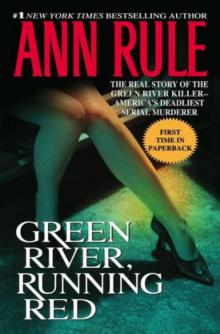 Green River, Running Red
Green River, Running Red Bitter Harvest
Bitter Harvest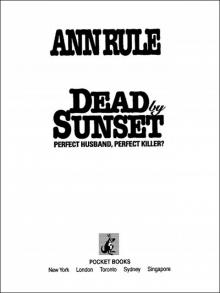 Dead by Sunset: Perfect Husband, Perfect Killer?
Dead by Sunset: Perfect Husband, Perfect Killer?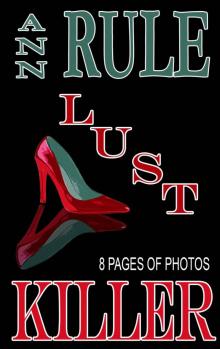 Lust Killer
Lust Killer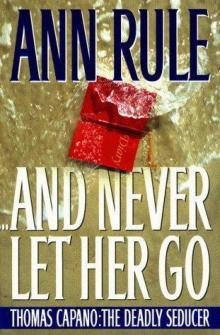 And Never Let Her Go: Thomas Capano: The Deadly Seducer
And Never Let Her Go: Thomas Capano: The Deadly Seducer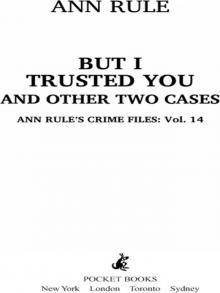 But I Trusted You and Other True Cases
But I Trusted You and Other True Cases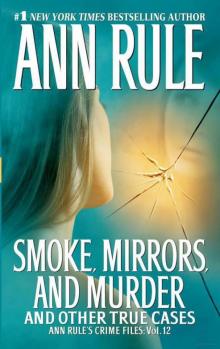 Smoke, Mirrors, and Murder and Other True Cases
Smoke, Mirrors, and Murder and Other True Cases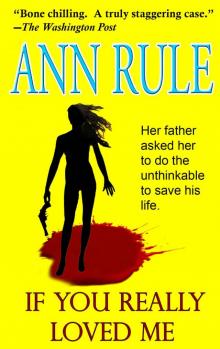 If You Really Loved Me
If You Really Loved Me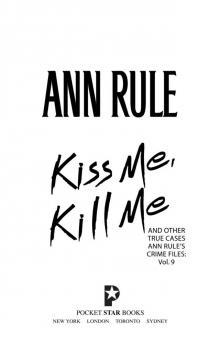 Kiss Me, Kill Me and Other True Cases
Kiss Me, Kill Me and Other True Cases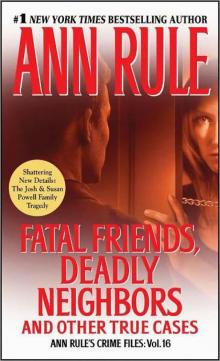 Fatal Friends, Deadly Neighbors and Other True Cases
Fatal Friends, Deadly Neighbors and Other True Cases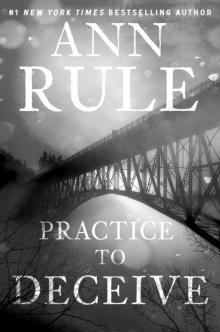 Practice to Deceive
Practice to Deceive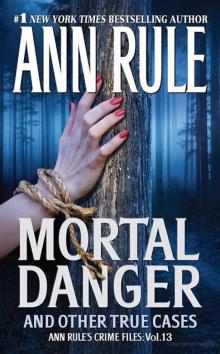 Mortal Danger and Other True Cases
Mortal Danger and Other True Cases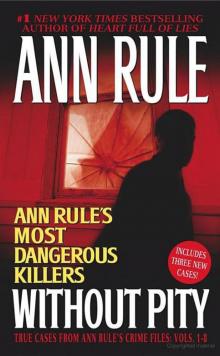 Without Pity: Ann Rule's Most Dangerous Killers
Without Pity: Ann Rule's Most Dangerous Killers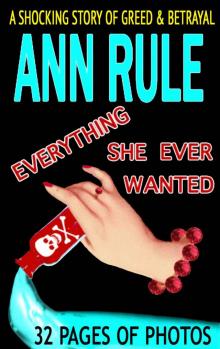 Everything She Ever Wanted
Everything She Ever Wanted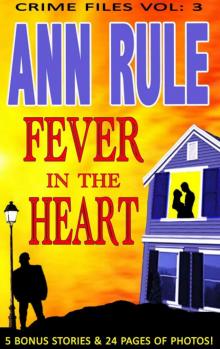 A Fever in the Heart and Other True Cases
A Fever in the Heart and Other True Cases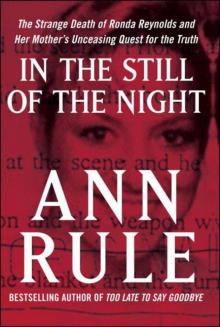 In the Still of the Night
In the Still of the Night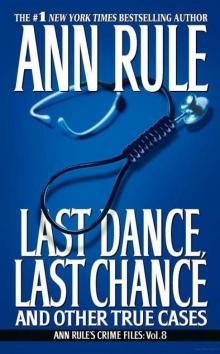 LAST DANCE, LAST CHANCE - and Other True Cases
LAST DANCE, LAST CHANCE - and Other True Cases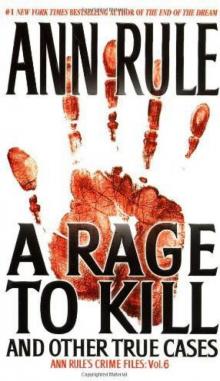 A Rage to Kill
A Rage to Kill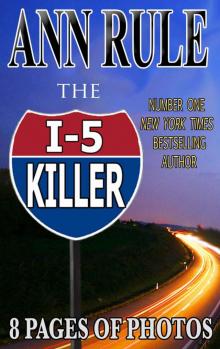 The I-5 Killer
The I-5 Killer The Stranger Beside Me
The Stranger Beside Me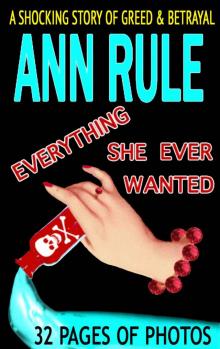 Everything She Ever Wanted: A True Story of Obsessive Love, Murder, and Betrayal
Everything She Ever Wanted: A True Story of Obsessive Love, Murder, and Betrayal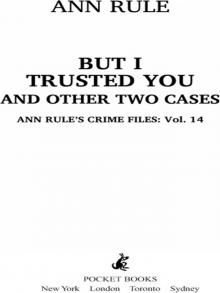 But I Trusted You
But I Trusted You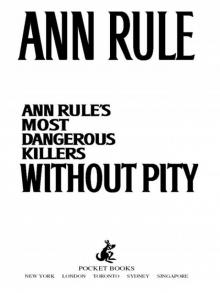 Without Pity
Without Pity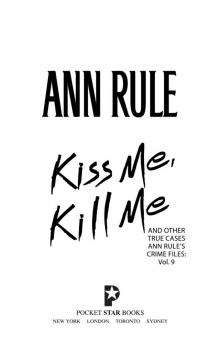 Kiss Me, Kill Me
Kiss Me, Kill Me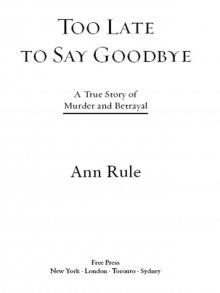 Too Late to Say Goodbye
Too Late to Say Goodbye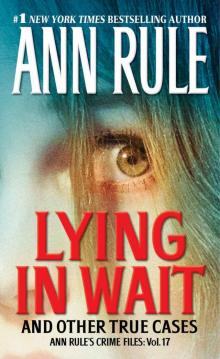 Lying in Wait
Lying in Wait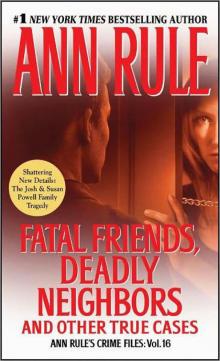 Fatal Friends, Deadly Neighbors
Fatal Friends, Deadly Neighbors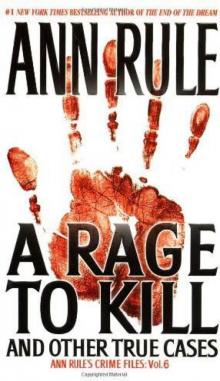 A Rage to Kill: And Other True Cases
A Rage to Kill: And Other True Cases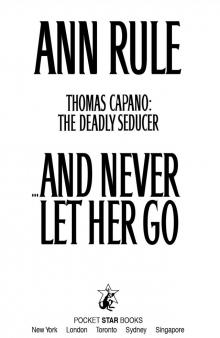 And Never Let Her Go
And Never Let Her Go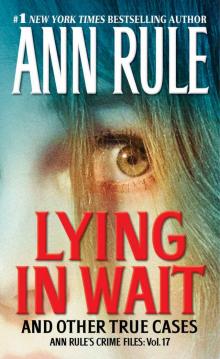 Lying in Wait Ann Rule's Crime Files Vol.17
Lying in Wait Ann Rule's Crime Files Vol.17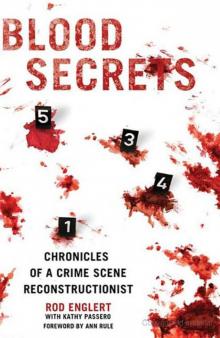 Blood Secrets: Chronicles of a Crime Scene Reconstructionist
Blood Secrets: Chronicles of a Crime Scene Reconstructionist No Regrets
No Regrets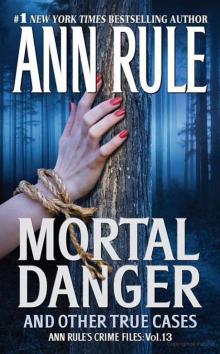 Mortal Danger
Mortal Danger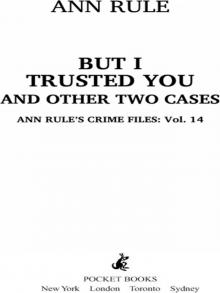 But I Trusted You: Ann Rule's Crime Files #14
But I Trusted You: Ann Rule's Crime Files #14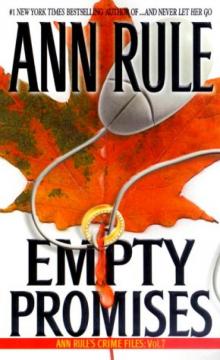 Empty Promises
Empty Promises Dead by Sunset
Dead by Sunset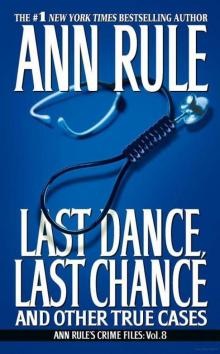 Last Dance, Last Chance
Last Dance, Last Chance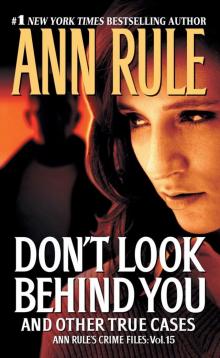 Don't Look Behind You
Don't Look Behind You